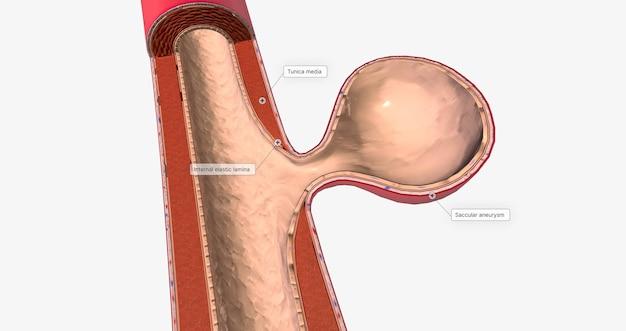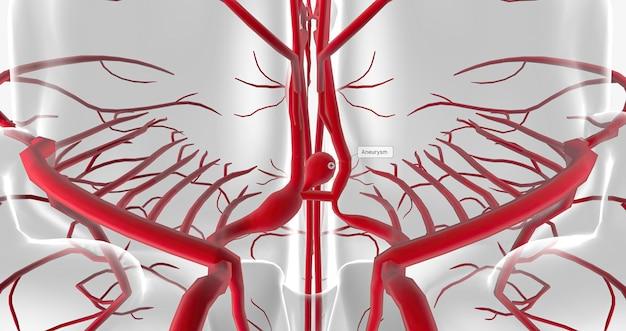Welcome to our blog post exploring the intriguing connection between eye exams and the detection of aneurysms. Your eyes are not only windows to the soul but also to your overall health. In recent years, there has been growing interest in understanding whether an eye examination can provide insights into potential aneurysms, a serious condition involving the weakening of blood vessels in the brain.
From the symptoms of a brain tumor to the impact of a brain aneurysm on your eyes, we’ll delve into various questions that many people have been asking. Join us on this journey to uncover whether a routine eye exam can truly serve as a means of early detection for such critical health issues. But first, let’s understand what an aneurysm is and the possible warning signs it may present.

Can an Eye Exam Detect an Aneurysm
Aneurysms are like the secret agents of the human body, lurking undetected until they decide to cause some serious trouble. These bulging blood vessels can rupture, leading to potentially life-threatening situations. But can something as innocent as an eye exam detect these elusive aneurysms? Let’s dive into the fascinating world of ocular inspections and find out.
The Link Between the Eyes and the Brain
Believe it or not, the eyes are considered the windows to the soul… and to the brain! The intricate web of blood vessels that supply oxygenated blood to your eyes also extends to your noggin. These vessels, aptly named the ophthalmic arteries, are like the blood expressways connecting your eyes and your brain.
Peering Into the Abyss: Retinal Examination
During a routine eye exam, your optometrist takes a peek into the abyss of your eyeballs using a clever device called an ophthalmoscope. This nifty contraption allows them to visualise the retina, the light-sensitive tissue lining the back of your eye.
Now, the retina is not just a pretty wallpaper; it actually contains a mini-network of blood vessels called the retinal arterial network. By examining these tiny blood vessels up close, your eye doctor might just catch a glimpse of potential warning signs for aneurysms.
Signs and Clues: Retinal Aneurysms
Retinal aneurysms, also known as retinal arterial macroaneurysms, are abnormal bulges in the retinal blood vessels. They can be an early indicator of systemic vascular diseases and may hint at the presence of aneurysms in other parts of your body, including the brain.
Aneurysms in the brain are particularly stealthy creatures, often showing no symptoms until they suddenly burst, leaving devastation in their wake. Luckily, if your eye doctor detects retinal aneurysms during your eye exam, it could potentially prompt further investigations to prevent a ticking time-bomb from going off in your brain.
The Limitations: Size Matters
While a comprehensive eye exam can indeed offer valuable clues, it’s important to remember that not all aneurysms can be detected through ocular inspections alone. The size of the aneurysm plays a key role in its visibility. Smaller aneurysms might be harder to spot during a routine eye exam, whereas larger ones might be more conspicuous.
Additionally, certain aneurysms may develop in locations of the brain that aren’t easily visualized using retinal examinations. In these cases, advanced imaging techniques like MRIs or CT scans may be necessary for a more in-depth investigation.
Minding Your Eye Health and Beyond
Regular eye exams aren’t just about checking if you need spectacles, they can offer a glimpse into your overall health too! By keeping up with these appointments, you give your eye doctor a chance to spot potential red flags that could indicate aneurysms or other serious health conditions. Remember, early detection can be a game-changer when it comes to managing your health.
So, the next time you find yourself in the optometrist’s chair, be sure to give your retinal blood vessels a warm welcome. They might just be the key to uncovering hidden aneurysms and saving the day!
References
- WebMD. Retinal Arterial Macroaneurysm. (2023). Link
- Royal Australian and New Zealand College of Ophthalmologists. Retinal Artery Macroaneurysm. (2023). Link

FAQ: Can an Eye Exam Detect an Aneurysm
What were the first signs of a brain tumor?
Brain tumors can have various symptoms depending on their location and size. Common signs may include headaches, seizures, vision problems, changes in behavior, memory difficulties, or weakness in certain body parts. However, these symptoms can also be caused by other conditions, so it is important to consult a healthcare professional for diagnosis.
Can an eye doctor tell if you are having a stroke?
While an eye exam cannot directly diagnose a stroke, it can reveal certain factors that may indicate an increased risk. An eye doctor may observe signs such as retinal artery occlusion or transient vision loss, which can be associated with strokes. However, a definitive diagnosis would require further medical assessment.
Can eye doctors see intracranial pressure?
Eye doctors can indirectly assess intracranial pressure through an eye exam. Changes in the optic nerve or optic disc can provide clues about elevated intracranial pressure. However, this is not a conclusive diagnostic tool, and further evaluation is necessary to determine the exact cause.
Can a brain tumor be detected during an eye exam?
While an eye exam can reveal certain signs that may raise suspicion of a brain tumor, it cannot definitively diagnose one. An eye doctor may identify optic nerve swelling, abnormal eye movements, or changes in visual fields that could be indicative of a brain tumor. However, a brain tumor diagnosis requires additional medical tests, such as imaging scans.
Can an eye test detect blood clots?
An eye test cannot directly detect blood clots. However, during an eye exam, an eye doctor may identify signs such as retinal vein occlusion or retinal artery occlusion, which can be associated with blood clotting elsewhere in the body. If blood clots are suspected, medical consultation and diagnostic tests are necessary.
Does a brain MRI show eye problems?
While a brain MRI primarily focuses on examining the brain and surrounding structures, it can detect certain eye-related issues indirectly. An MRI may reveal abnormalities related to the optic nerve, brain tumors affecting the visual pathway, or other conditions impacting eye health. However, a specialized eye exam is typically required for a comprehensive evaluation of eye problems.
Can a brain aneurysm affect your eyes?
Yes, a brain aneurysm can potentially affect the eyes. Pressure from an aneurysm may cause vision disturbances, such as blurred or double vision. In severe cases, it can lead to complete vision loss. If you experience any sudden or significant changes in your vision, it is crucial to seek immediate medical attention.
Can an eye test detect serious problems?
An eye test can indeed detect various serious problems that extend beyond the eyes themselves. By examining the eyes and their structures, an eye doctor may identify signs of systemic conditions like diabetes, high blood pressure, or certain autoimmune disorders. Regular eye exams are an important part of overall health monitoring.
Are there any warning signs before a brain aneurysm?
Brain aneurysms often remain silent until they rupture, at which point they can cause severe symptoms. While warning signs directly before an aneurysm rupture are rare, individuals with unruptured aneurysms may experience headaches, visual disturbances, eye pain, or changes in mental status. If you have concerns, it is crucial to consult a healthcare professional.
Does pain behind the left eye mean an aneurysm?
Pain behind the left eye can have various causes, and it is not solely indicative of an aneurysm. Other factors, such as migraines, sinus problems, or eye strain, can also trigger this type of pain. It is best to consult a healthcare professional for a proper evaluation and diagnosis.
Can an eye exam detect heart problems?
Although an eye exam cannot directly diagnose heart problems, it may show certain signs that could indicate an increased risk. Conditions like high blood pressure or diabetes can manifest changes in the blood vessels within the eyes. Detecting these signs during an eye exam can prompt further cardiac evaluation and management.
What are brain tumor headaches like?
Headaches associated with brain tumors can vary in intensity and characteristics. They may be persistent, worsen over time, and differ from regular headaches. Brain tumor headaches can be accompanied by other symptoms such as nausea, vomiting, seizures, or changes in vision. Consultation with a healthcare professional is crucial for proper evaluation.
What vision problems do brain tumors cause?
Vision problems caused by brain tumors can vary depending on the tumor’s location and its impact on the visual pathway. Tumors affecting the optic nerves, chiasm, or other visual structures can lead to symptoms such as blurred vision, decreased visual acuity, double vision, or visual field defects. A thorough medical examination is necessary for accurate diagnosis.
What do opticians check for?
Opticians conduct various assessments during an eye exam to evaluate vision and eye health. They check visual acuity, refractive errors, eye muscle coordination, and depth perception. Opticians may also screen for common eye conditions like glaucoma or cataracts. If necessary, they refer patients to ophthalmologists for specialized care.
Is my eye pain an aneurysm?
Eye pain can stem from various causes, and while it can rarely be a symptom of an aneurysm, it is not the sole indicator. Other factors like eye strain, dry eyes, or sinus issues can also lead to eye pain. If you are concerned, it is essential to consult a healthcare professional for an accurate diagnosis.
What are the signs of an eye aneurysm?
Ey